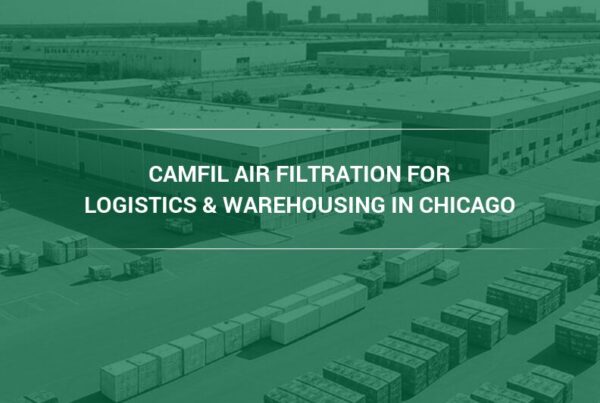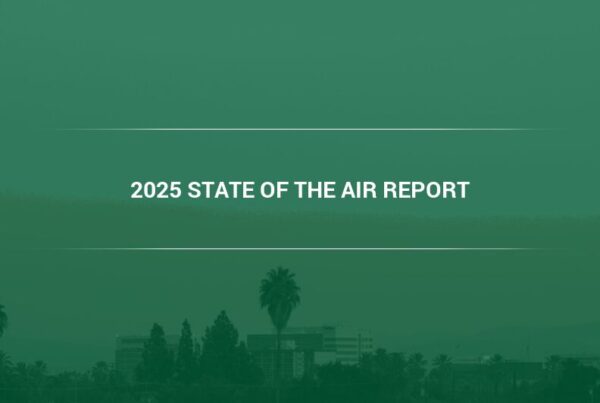Southern California has some of the worst air pollutions in the entire U.S., around 1,300 people within the Los Angeles and Long Beach area die every year due to air pollution. This air pollution problem is being compounded by the huge quantity of warehouses in the region, which stores many goods.
Approximately forty percent of all U.S. goods pass through the lower Los Angeles area. Warehouses in this area produce pollution and need frequent deliveries from large trucks and boats, which emit more pollution.
The World Logistics Center has recently proposed a massive warehouse facility the size of 700 soccer fields including 40.6 million square feet of industrial buildings located in Moreno Valley. This has caused at the least 10 lawsuits, and critics say it would be a massive setback in the fight against Southern California’s filthy air.
What are the consequences of those warehouses on air quality and what can be done to combat air pollutants inside the region?
The Extent of Air Pollution from Warehouses
The extent of air pollution from warehouses stretches to the South Coast Air Basin, where more than $360 billion dollars worth of goods from manufacturing facilities across the Pacific are offloaded by huge ships docked in the Los Angeles and Long Beach area. Yet this financial boom carries an environmental and societal toll with it.
Air in the South Coast Air Basin exceeds both federal and California state requirements for lead and small particulate emissions. These emissions are so small they can easily penetrate the lungs.
The San Bernardino and Riverside counties, which make up the Inland Empire, are at the very top of the top 25 most ozone-polluted counties, according to the American Lung Association’s 2016 air pollution file.
“Diesel trucks constantly drive along the Inland Empire’s roads, bringing constant shipment to clients and dumping particulate pollution into the air. Ocean winds blow the newly introduced pollution down from LA and Orange County, which accumulates in the basin, restricted from escaping to the north or east thanks to mountains,” says Camfil’s Kevin Wood, VP of Sales & Marketing. “That makes the South Coast Air Basin, which has parts of Orange, Riverside, San Bernardino, and Los Angeles counties in it, one of the unhealthiest places to live in the entire U.S. All of this air pollution results in a higher chance of coronary heart disorder, bronchial asthma, cancer, bronchitis and more.” (1)
The Effects of Air Pollution from Warehouses
The effects of air pollution from warehouses have been studied and research indicates that these emitted particulates from diesel trucks are one of the most probable contributors to lung cancer.
The World Logistics Center’s environmental impact study estimates that one out of every 10,000 individuals who live in the area near the proposed warehouses could get cancer if continuously exposed to its emissions, and so could one out of every 50,000 individuals within the larger area.
“In response to the threat posed by air pollution from warehouses, nine groups have filed lawsuits against the construction plan, including the California Clean Power Committee, the SoCal Environmental Justice Alliance, and the Riverside County Transportation Commission,” says Wood. “These groups have pointed to the environmental evaluation released by the World Logistics Center, which reports that the project would likely generate tremendous additional amounts of air pollutants. The pollution would include particulate emissions from diesel exhaust, nitrogen oxides, and other harmful compounds which create smog.” (2)
Critics say that the new warehouses would only exacerbate Southern California’s already substantial air quality problems. Southern California’s air has improved notably since the 1970s, thanks to strict regulations that have decreased emissions, but SoCal still has a long way to go.
“Low-income neighborhoods would endure the brunt of this pollution because they’re often located close to freeways or the planned sites for warehouses,” says Woods. “Nearly 20% of people in the Moreno Valley area live in poverty and the employment and other economic benefits of the proposed warehouse construction are attractive. The drawback consists of 14,000 new diesel trucks passing by a day and a 44 percent increase in yearly greenhouse gas emissions.” (3)
Solutions to Air Pollution from Warehouses
South Coast Air Quality Management District (SCAQMD) is investigating solutions to air pollution from warehouses. The plan for controlling emissions involves providing incentives for companies to reduce emissions. SCAQMD says the incentives will accelerate the adoption of more modern and cleaner technologies while lowering the risk that companies will sue over new regulations.
Incentives would help companies switch from older cars to vehicles and systems with zero or near-zero emissions. The incentives are supposed to be for smaller businesses, not massive companies like Amazon, Walmart, and FedEx. Estimates report that approximately half of warehouse transport vehicles are owned by smaller companies, even when they serve industry giants.
Critics of the incentive policy argue that incentives just let companies which should be paying to clean up their emissions off the hook. Environmental activists, like the Sierra Club, said the incentive plan is too weak to address the pollution problem, and that it values business over people’s health. They also want to see the SCAQMD take more action to cut back on indirect sources of pollutants, and that only regulation will be effective to control pollution from factories and warehouses.
“Both sides agree that there is a need to balance both economic and environmental impacts. One approach to tackling air pollution from warehouses could be passing through regulatory laws and statutes, but also providing incentives for companies to make changes on their own,” says Wood at Camfil. “Frequently regulations take time to get off the ground, so corporate incentives to fight air pollution would be a good stop-gap measure.”
Given the damage to people’s health and welfare that air pollution from warehouses has, it makes sense for SCAQMD and other agencies to invest in solutions to the problem and curb emissions immediately.
Check out clean air solutions and Air filters by Camfil now for more information on air pollution from warehouses and its effects on people’s health.
Lynne Laake
Camfil USA Air Filters
T: 888.599.6620,
E: Lynne.Laake@camfil.com
F: Friend Camfil USA on Facebook
T: Follow Camfil USA on Twitter
Y: Watch Camfil Videos on YouTube
Sources:
https://www.wired.com/2017/05/orange-empire-became-land-megawarehouses/
https://nextcity.org/daily/entry/southern-california-air-pollution-regulation-incentives



